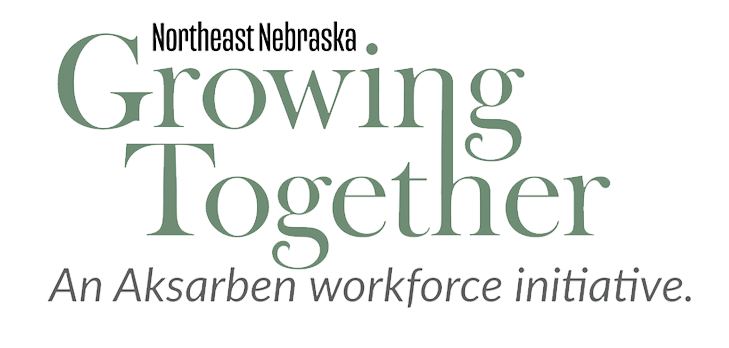Lisa Guenther, early childhood education instructor at Northeast Community College, speaks on quality childcare and early childhood education issues during the college’s Hawk Talk lecture series recently on the Norfolk campus.
As population shifts continue, Nebraska is experiencing more food deserts — defined as areas with limited access to a grocery store or healthy, affordable food retail outlets. However, there is another category that is drying up as well, an area that is critical to families with children under the age of 5.
The mayor of one area community said quality child care is one of two issues critical to the continued economic development in his town and will be a priority focus for the coming year. Statistics show that three-quarters of the number of children under age 5 in Nebraska have parents in the workforce. These parents need places to take their children while they work, which has been a struggle for many of them.
Lisa Guenther, an early childhood education instructor at Northeast Community College, said the problem had intensified over the past two years.
“When COVID hit, 21% of Nebraska’s child care closed, compounding the problem,” she said. “You may ask, ‘Why do we have this problem?’ It’s because 76% of children in Nebraska have all available parents in the workforce. This is the highest rate in the nation. The national average is 67%. Thus, Nebraska has the highest need for quality child care.”
Guenther spoke about quality child care issues and early childhood education during the college’s Hawk Talk lecture series recently on the Norfolk campus.
“With a majority of all available parents in the workforce, families need help, and quality child care is basic to the most vulnerable population that we have — babies and children, birth to age 5,” Guenther said.
Shortage of licensed child care
In Madison County, there are approximately 2,300 children under the age of 6 with all available parents in the workforce. Additionally, there are 1,400 positions for children in licensed centers, with an additional 40 spots that include Head Start and Early Head Start. The county has 93 child care locations — 72 of which are in-home settings and 11 center-based. None of them offer Spanish-speaking services. That leaves 433 children under the age of 5 without licensed child care in Madison County.
“We’re not saying non-licensed child care locations are not good,” Guenther said. “We’re saying there are many benefits to the children and the child care provider in a licensed child care.”
Another concern is night-time care. Only one center in Norfolk is open until 11:30 p.m. Guenther said the need for additional after-hours centers is crucial.
“Think of our health care providers at Faith Regional (Health Services). They are there all night. We have many workers throughout the night, and I have told my students they would do well with any child care they open because of the children who are not in licensed child care. But if they could operate one that would be open all night, that would address a need.”
The employment of child care workers is projected to grow 8% through 2030, about as fast as the average for all occupations. The U.S. Bureau of Labor Statistics reports approximately 150,300 openings for child care workers are projected each year, on average, through the decade. Many of those openings are expected to result from the need to replace workers who transfer to different occupations or exit the labor force, such as retirement.
Guenther is witnessing the need first-hand. She posts openings on the early childhood program’s Facebook page regularly. Two years ago, she would get one or two job opportunities each week for her students.
“I get four to five a week now.”
Child care and preschools are urged to send Guenther job openings to be posted for students.
Lack of quality child care is also an issue when attracting business and industry to the state as well as in the development of a talent pool to support ongoing economic sustainability. There is no one solution to meeting the needs, but efforts are underway to address the issue.
Northeast Community College is in partnership with organizations such as the Buffett Early Learning Institute, the Aksarben Foundation and the Northeast Nebraska Growing Together Initiative. The latter is looking at developing local revenue strategies to sustain community-wide quality early childhood programming to provide safe, healthy learning environments for children.
“Investments in the development of young children represent a long-term strategy for building a talent pipeline that will deliver a more productive workforce, cohesive communities and a stronger Nebraska,” according to the initiative’s executive summary.
Guenther noted that a coordinated effort is necessary to address the matter.
“All of these groups are coming together realizing that we have this need and are working together to do it the ‘Nebraska way’ and overcome these obstacles.”
Preparing child for school, life
During the lecture, Guenther spoke at length on how Northeast’s early childhood program is part of the solution to the crisis. It prepares graduates to work in child care centers, preschool settings, Head Start, before- and after-school programs, family home care and as classroom aides and nannies.
“We have students who are going to go out and open their own licensed child care and be successful. We have other very successful students who are going to show up daily in child care and do exactly what they’re told and love those kids.”
Guenther also shared habits adults can use to interact in the lives of children. One example featured her using common toys to illustrate how children learn.
She had Northeast Frisbees and various themed small rubber ducks scattered across the room and asked attendees to describe concepts that a child could learn by playing with the toys. Letters, colors and occupations were among the observations that were shouted out.
Another invaluable routine is reading. Research shows that reading aloud daily to a child from birth is the No. 1 thing a person can do to prepare a child for school and for life. Reading to a child — regardless of age — boosts brain development, bonding, listening skills, attention span, cognitive and language development, and vocabulary skills among many others.
Guenther said it may seem simple, but reading is the single most important thing an adult can do to build these abilities in a child.
To conclude the evening, Guenther read a bedtime story to the group, “The Peace Book,” by Todd Carr.
“If you have children in your lives, read to them daily. Remember, it’s not just a Frisbee, it’s not just a duck; every minute you are with a child is a learning moment and it’s brain research for those children.”
https://norfolkdailynews.com/news/northeast-program-is-part-of-the-solution-to-a-lack-of-quality-child-care/article_3fb278a2-9bcd-11ec-b80e-7fcf23963d92.html







